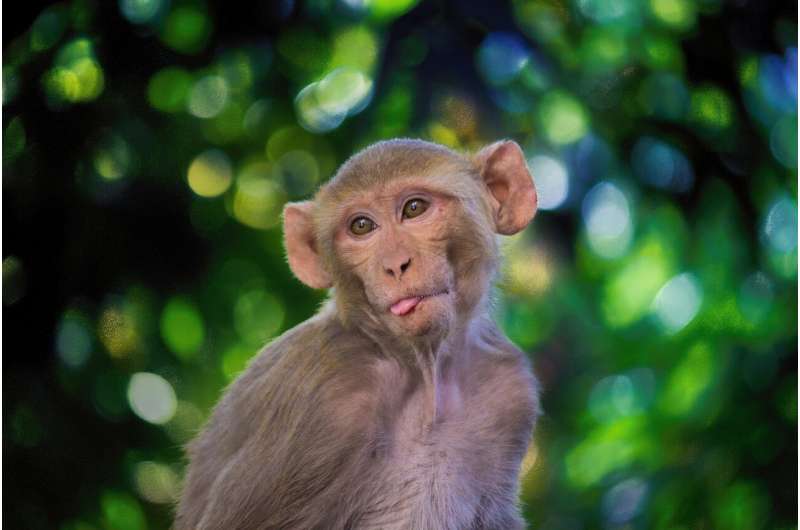This article has been reviewed according to Science X's editorial process and policies. Editors have highlighted the following attributes while ensuring the content's credibility:
fact-checked
peer-reviewed publication
proofread
Macaque study investigates role of interhemispheric pathways in spinal cord injury recovery

Stroke and spinal cord injuries can severely impair motor functions, and understanding how to promote recovery is a critical challenge. While damaged neurons in the brain and spinal cord have limited ability to regenerate, the brain can form or strengthen alternative neural pathways involving uninjured parts of the brain, enabling functional recovery. Such reorganization of pathways in the brain is called neural plasticity, and identifying the involved pathways and understanding their functions can aid researchers in developing more effective rehabilitation strategies.
Previous research has shown that when one side of the corticospinal tract—a major pathway that carries movement signals from the brain to the spinal cord—is damaged, the activity in the motor cortex on the opposite side of the brain increases. This has led to questions about whether this increased activity helps or hinders recovery, and the precise role of these pathways has been unclear.
In a study published in Nature Communications, researchers from WPI-ASHBi, Kyoto University and National Institute of Physiological Sciences conducted experiments in macaque monkeys to explore how this change in neuronal activity affects recovery from spinal cord injury.
To manipulate neural activities in both motor cortices, viral vectors were injected into targeted brain areas to block communication between the left and right motor cortices via drug administration, the effect of which was reversible. This allowed the researchers to observe how disrupting these pathways affected the monkeys' ability to perform precise reaching and grasping tasks before and after the injury. In addition, they measured neural activity in the motor cortex on both sides during the task. The results showed that blocking the pathways had no effect on the monkeys' ability in the absence of injury.
However, there was a notable decrease in the monkeys' ability because of the blockade during the early stage of recovery. This suggests that the interhemispheric pathway, which is not typically involved in motor functions, becomes relevant for motor recovery in the early stage. The study also highlighted changes in the activity patterns of the motor cortex when the pathways were blocked. With blockade of the signal from the opposite side, the activity on the affected side decreased during the early stage of recovery from injury. On the other hand, the same blockade increased activity in the intact state.
These results suggest that the interhemispheric pathway between the left and right motor cortices, which plays an inhibitory role in the intact state, plays a facilitating role in the early stage of recovery after injury. This pathway activates the motor cortex on the side that is not involved in the motor functions in general, thereby contributing to the recovery of motor function.
"These results highlight that while the interhemispheric pathway is inhibitory in the intact state, it becomes facilitative during early recovery, aiding motor function recovery by activating the motor cortex on the non-involved side," explained Dr. Masahiro Mitsuhashi, the lead researcher of the study. This discovery underscores the adaptability of spared neural pathways in promoting recovery after central nervous system injuries.
The findings from this study provide valuable insights into how brain pathways contribute to motor control and how the brain responds to disruptions. These insights are crucial for developing better strategies for rehabilitation and treatment of motor impairments resulting from brain injuries.
The researchers plan to investigate how similar pathways function in other types of central nervous system injuries, such as those caused by strokes. By integrating these findings with traditional rehabilitation methods, they hope to improve therapies for severe central nervous system injuries and reduce long-term impairments.
"Further investigations are required, but we hope that revealing the neural pathways crucial for recovery and developing methods to activate them will lead to advancements in future neurorehabilitation therapies," Mitsuhashi said.
More information: Stage-Dependent Role of Interhemispheric Pathway for Motor Recovery in Primates, Nature Communications (2024). DOI: 10.1038/s41467-024-51070-w



















